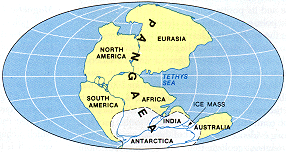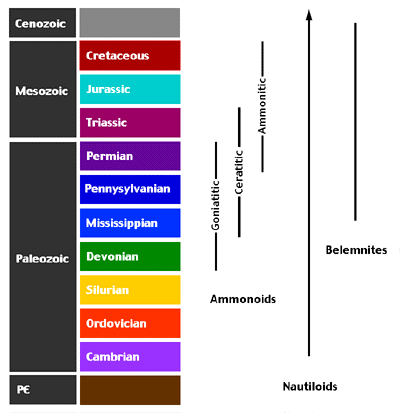| The joining together of the continents into one huge continent, Pangaea, near the end of the Paleozoic can explain the differences between the life of the late Paleozoic and the early Mesozoic. |  | Figure 9: All the present continents were joined together near the beginning of the Mesozoic era, about 200 million years ago. |
| Pangaea would probably have had greater climatic extremes, which would have affected plants and terrestrial animals. The total shoreline would have been less, creating more competition among the marine animals. All of these effects can be seen in the life of the Mesozoic. The cephalopods nearly became extinct twice: at the massive end-Permian extinction event, and at the end of the Cretaceous. The Ammonoids and Belemnites became extinct at the end of the Cretaceous. |  |
| Figure 10: Distribution of the major cephalopods in geologic time scale. |
The only surviving cephalopods today are the Nautilus and the Coleoids.
It is believed that these cephalopods managed to survive these
extinctions by:


